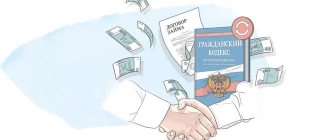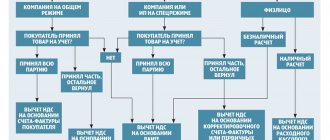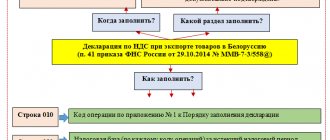Hello members and readers of the Debtors Community! I welcome you again to the pages of this blog.
Repaying a debt with a bill of exchange is a very interesting topic. Many anti-collectors and simply lawyers have now begun to actively offer such a service as repaying a debt with a bill of exchange at the stage of enforcement proceedings.
Many began to offer this service, others began to study what the catch was, began to publish materials both “for” such a service and materials “against” such a service.
In general, a very strong discussion ensued on the Internet. Do you think I take part in these disputes? I don’t know your answer - I’m just interested in knowing about it, I ask you - leave your answer below in the comments.
And I’ll answer myself - of course, how can such a relevant and simply interesting debate take place without me? Moreover, the dispute is on a topic that worries every debtor.
So here's the discussion.
It all started when the famous loan lawyer Yu. Nikitin published his next post - Repaying a debt with a bill of exchange. In this post, Yu. Nikitin expressed his positive attitude towards such a new phenomenon and asked those involved in this issue to provide practical examples.
Immediately there were advertisements for this post - that, they say, everything is fine, everything is legal, the bailiffs accept bills and everything will be fine with you, dear debtors.
Yura again asked these “representatives” to talk in more detail about the service and give practical examples of positive outcomes. And again silence.
And on this note I enter into the debate. I expressed an opinion on this issue, plus, for my part, I published a survey on VKontakte on the topic - is it possible to repay a debt with a bill of exchange or not. Here are the results - see for yourself.
Now these same representatives began to write to me, what is called “personal”, and say that the scheme really works. I will not cite their letters so as not to divulge the secret of the correspondence; whoever wrote to me will understand who I am talking about.
They probably hoped for the fact that they could somehow lure me to their side, that I wouldn’t figure it out or trust their promises. They are wrong! I know legal work very well, I know very well what a bill of exchange is and what these comrades are talking about all over the Russian Internet. More on this a little later, so stay until the end - it will be interesting!
In response, I wrote to them my thoughts, gave my evidence why I believe that such practices will never have a place in our state. With all this, I respectfully asked to present specific facts, decisions of the bailiff service to seize such bills, and then, as a result of this, the end of enforcement proceedings.
As a result, I received very “good” comments that I was a bad lawyer, that I couldn’t figure it out and was drawing conclusions indiscriminately, and so on. With all this, these representatives did not provide materials confirming their words!
But we will somehow talk about my knowledge in other topics, and now I give you, my readers, my arguments regarding this whole issue.
Repaying a debt with a bill of exchange: what is the essence and content of the service?
Let's start with the fact that it is possible to cover the debt itself with a bill of exchange. Why not. Those. if you have a bill of exchange in your hands, and a bill of exchange is a security with all the details that this security called a bill of exchange should contain, you have the right to present it to the bailiff service and invite the bailiff to arrest it.
The bailiff seizes the security and then transfers the security to the creditor. If everything is fine with the security (it has been paid in full, there are no payments on it (not a loan!), all details comply with the law, and so on), the creditor can cash it and receive satisfaction of his claims in this way.
Everything is clear here. If you are interested, I advise you to purchase a book that describes in detail:
- actions of bailiffs when seizing securities;
- how creditors satisfy their claims by cashing out securities;
- judicial practice of repaying debt by bill of exchange and other securities;
- and much more.
In general, the book is very useful on the issue of paying off debt with a bill of exchange. I give it as an example because I read this book quite a long time ago. It really tells the practice: the practice that exists at the present time. It was this book that gave me knowledge, thanks to which it is now difficult for me to be fooled by all sorts of incomprehensible schemes.
This is the essence and content of repaying a debt with a bill of exchange. You have a paid bill in your hands and present it to the bailiff service to resolve the issue of closing the proceedings.
The creditor accepts such a bill and the proceedings are closed. It must be said that everything is clear here and any action to the side can lead to the most unfavorable consequences, including criminal prosecution.
Details of a promissory note
A promissory note, like a bill of exchange, has standards that are determined by the “Uniform Law on Promissory Note and Bill of Exchange”. A document can be recognized as a promissory note when the following mandatory details exist:
- the label “bill”, which is indicated in the text;
- a clear obligation to pay a certain amount;
- name of the recipient of the amount;
- name of the first holder and payer;
- date and place of payment;
- place and date of document preparation.
The bill must be certified by the signature of the drawer. In most cases, the absence of any of the specified details means it is impossible to recognize the legal force of a promissory note for the document. The exceptions are the following cases:
- when the due date is not specified, the bill can be considered drawn up for payment at sight;
- when the address to which the payment will be made is not indicated, the payer’s address will be equated to it;
- the address of the drawer is equated to the place of drawing up the bill, when such is not indicated.
Even when among the persons who signed a promissory note there are those who are unable to fulfill their obligations, the signatures of the legally capable authors of the promissory note remain valid.
A bill is a valuable debt security, a written obligation of a certain strictly form. The person who issued the bill is called the drawer. The person who owns the bill is the holder of the bill. Bills of exchange can be either transferable or promissory notes.
The drawer of a promissory note must pay the amount unconditionally to the holder of the bill.
A draft (bill of exchange) is a debt paper in which the drawer gives the payer a written order to pay an unconditionally named amount. The procedure for the payer to undertake to pay on a bill of exchange is acceptance of the bill.
What is the meaning of the service about which I have a dispute?
The service is as follows.
There is a certain Consumer Society (hereinafter referred to as PO) - a non-profit organization that unites members and all the activities of this organization boil down to simplifying or improving the lives of its members in one issue or another.
You pay an entrance and membership fee to this consumer society, pay 20% or 30% of the amount of your debt (different rates vary in different software). Next, the software issues you a bill of exchange.
You have the right to present this bill (most often it meets all the requirements of the law - I am not considering an illegal bill in this article) to the bailiff service.
Everything was fine, if not for one small BUT!!! Which? Where is the money? The money that the lender will receive as a result of cashing the bill?
And here two situations are possible:
- The bill has not yet been paid
- The PO issues to its member an already paid promissory note for the entire amount of his debt.
The bill has not yet been paid
In this case, we are talking about a kind of refinancing. Those. the debtor, paying entrance and membership fees to the software, plus 20 or 30 percent of the amount of the debt, receives a bill as if on credit. Those. for this, the PA member will in the future make permanent and regular payments to the PA.
Those. in fact, one obligation is closed, another obligation arises. The question arises here: what exactly is the legal service in this case?
This turns out to be not a legal service, but a financial service, which has a number of negative circumstances. Which ones? Well, the first thing that comes to mind is a new obligation, where the creditor is the software that issues the bill to you. A new obligation carries with it new interest, a new term, new risks, new litigation, and so on.
In general, remember how they harassed you, how they called you, how they scared you, and so on under the old loan agreement. Remember? The same thing awaits you in the future, because if you did not pay for the old agreement, why are you sure that you will pay for the new one, which is essentially the same - a loan, only issued through a security - a bill of exchange?
However, I will not talk about the negative consequences of this action in this article. This is a completely different story. And on topic I’ll tell you what happens next.
Then the bailiff seizes the security. But the lender does not accept it, because there is no money on the security.
As a result, the following situation arises: Enforcement proceedings are not closed because the bill of exchange was not accepted by the creditor due to lack of money. Those. the old contract has not been closed, the debt has not been paid.
And the debtor has a new obligation - an obligation to the consumer society to provide a bill of exchange on credit. If you receive it for 20%, in any case you will have to return the money for which it was issued.
Bill of exchange for the entire amount of debt
Yes, it is also possible for a situation where a consumer society (consumer society) issues its member a paid bill for the entire amount of the debtor’s debt. What happens in this case?
This case is especially dangerous. And it reminds me of the scenario of such a Society as MMM. Remember this happened? It opened twice, failed twice, and nothing teaches our Russian people...
See for yourself. Let us analyze this example using the example of three participants. For a Consumer Society, let’s say the authorized capital is 100,000 rubles. Its participants, say, Ivanov, have a debt of 50,000 rubles, Petrov has 50,000 rubles, and Sidorov has 50,000 rubles.
Here are two of them - they will taxi out, and the Bank will cash out its money. Let's say, let there be Ivanov and Petrov. But Sidorov, having contacted the bailiff service, the software will no longer be able to pay his obligations. Why? Because the software doesn’t have an extra 50,000 rubles. Where will the software get the money to pay for its members, and practically for nothing - for 20% of the debt amount.
Sidorov will be able to pay only 30,000 rubles (if the calculations are made in a specific example). Everyone has 50,000 debt, everyone must pay 20% - that’s 10,000 rubles. Three participants, therefore, it turns out 30,000 rubles. But not 50,000 rubles! It's all math.
Debtors - do not even think about using this service!!! I strongly recommend avoiding such software. Don't let yourself be deceived!
And do not forget that with 30,000 rubles received from its participants, the software is obliged to pay tax to the state. And such a payment is considered in turn to be of priority than payments to participants or members of the software. The total is not 30,000 rubles, but even less.
Representatives asked me - what does MMM have to do with it, we have practice. And I answer - how and what. Just as MMM printed money out of thin air, for which Mavrodi paid with prison, then the software also prints some kind of virtual money out of thin air. Smells like a scam!
Understand that neither software, nor MMM, nor any other organization (even a commercial Bank!) will be able to print money for you. Just like that - for 20% of the debt amount and your beautiful eyes.
In addition, the bank will not accept the bill until it is cashed. And the worst thing is, and this terrible thing is the main argument. Answer the question: who presents such a bill of exchange to the official body? That's right, the debtor himself.
Not the consumer society, not software representatives, not lawyers and attorneys who promise you “mountains of gold.” Presents to the bailiffs - the debtor. Consequently, he should bear responsibility for the fact that something is wrong with the bill, as with a security.
Remember this.
Term of promissory note
There are bills
t warrant or registered - to the bearer. The payment period for a bill of exchange is indicated as follows:
- at such and such a time from presentation;
- upon presentation;
- on a specific day;
- at such and such a time from composition.
Only when a bill is issued for payment at sight or at some time from sight can interest be indicated on it. In other situations, the accrual of interest is not allowed - it will be unwritten. Receipt of income on a bill of exchange is usually possible as a discount.
The law will require that the bill be presented for payment on time: either on the day the bill becomes due or within two days. If payment on a bill of exchange is refused, there is a special procedure - a protest on the bill of exchange. A protest against a bill of exchange is made before a notary, and further consideration in court is not required. The court immediately issues a court order requiring collection. That is, they begin enforcement proceedings against the debtor.
A bill of exchange is not an issue-grade security. Its release will not require state registration. Using this, Russian banks use bills of exchange as a financial instrument similar to deposits. But obligations under a bank bill, unlike a time deposit, do not take part in the investment insurance mechanism.
conclusions
There is only one conclusion.
If you have a paid bill of exchange or any other security in your hands, you can easily carry out the procedure: repaying the debt with a bill of exchange.
It’s paid off, you don’t have a new loan obligation, and someone else doesn’t invest their money for you. Everything is great.
In all other cases, repaying the debt with a bill of exchange is impossible. Don't even fall for such tricks. Believe me, this will not lead to anything good. And there will be only one result: someone may be lucky and have time to get through the program (when the software has its own money), but someone will not have time (and such clients will be the majority).
Well, that's basically all. On this issue, my point of view has been expressed. Write your opinion on this issue in the comments. It is interesting to know what debtors breathe and think about. I want to say that I do not deceive or insult anyone, do not humiliate or scare anyone. If anyone has practical examples that prove the opposite of my point of view, I will be happy to listen and write about this issue.
Although this is unlikely to happen: after all, this whole process was prescribed a long time ago and inventing something new, as they say, is more expensive for yourself!
I also suggest that you learn this whole process: from the very beginning to the very end. To do this, you just need to sign up for training at the first Anti-collector School in Russia, where training is carried out according to my original method. Join us friends!
Advantages and disadvantages of the security in question
Bills of exchange have advantages and disadvantages that must be considered before purchasing this type of security.
A promissory note allows a company to borrow and disburse funds without going through banking institutions that charge fees for their services. In addition, the security can be sold or transferred to another person.
Main advantages of the bill:
- With the help of this security you can give away funds later;
- the bill acts as a guarantor that the loan will be repaid;
- can be used instead of cash when handling;
- if the need arises, the document in question can be sold;
- Thanks to the bill, the tax payment process is optimized.
The main disadvantages of the security in question:
- the third party may not accept the security in question for payment;
- If the procedure for returning funds occurs through the judicial authorities, the consideration of the case may drag on for several months.
Is it possible to use a promissory note in work without involving a banking institution?
To ensure that the banking institution does not control the promissory note, it is drawn up as a friendly bill. Such a security is unsecured, not linked to actual transactions, and is issued on the basis of goodwill.
We are preparing an application for debt collection under a promissory note
If, after presenting the bill for payment, it has not been repaid, then the debt can be collected in court.
If there was no avalist for a simple bill of exchange, you can receive the amount due and repay the debt on the bill of exchange through writ proceedings by preparing the appropriate
Such an application for collection of debt under a promissory note is submitted to the court at the location of the debtor and is considered according to an abbreviated procedure.
After a certain time, the resulting act will acquire the status of an executive document, which will be sufficient for forced collection of the debt.
In the case where a guarantee is made on a simple bill of exchange, a claim can be brought simultaneously against both the person who issued the bill and the guarantor.
Here the court is chosen by the plaintiff at the location of one of the defendants. If the claim is satisfied, both the avalist and the debtor will be jointly and severally liable.
However, in each of the options described above, the applicant (plaintiff) must have indisputable evidence, the original bill of exchange. As practice shows, the courts look closely at this.
Tax accounting of bills under the simplified tax system
The use of a bill of exchange as a non-monetary form of payment under the simplified taxation system presupposes that the “simplified” person has knowledge of the features of accounting for income and expenses, the procedure for recognizing which is determined by Article 346.17 of the Tax Code.
As a general rule, the date of receipt of income is recognized as the day of receipt of funds into bank accounts and (or) the cash desk, receipt of other property (work, services) and (or) property rights, as well as repayment of debt (payment) to the taxpayer in another way (cash method).
When the buyer uses a bill of exchange in calculations, the date of receipt of income from the taxpayer is the date of its payment (the day of receipt of funds from the drawer or another person obligated under it) or the day the taxpayer transfers the specified bill of exchange by endorsement to a third party.
Expenses of the taxpayer are recognized as expenses after their actual payment. Payment for goods (work, services) and (or) property rights is recognized as the termination of the buyer’s obligation to the seller, which is directly related to their delivery.
At the same time, when the buyer issues a bill of exchange to the seller in payment, the costs of purchasing the specified goods (works, services) and (or) property rights are taken into account after its payment. When the taxpayer transfers a bill of exchange issued by a third party in payment, expenses for the acquisition of the specified goods, works, services, property rights are taken into account on the date of transfer of the specified bill. These expenses are taken into account based on the contract price, but not more than the amount of the debt obligation specified in the bill.
An important conclusion: the procedure for accounting for income when paying with a bill of exchange does not depend on its type (own or a third party). The procedure for recognizing expenses is determined by whether you issue your own bill of exchange to the seller or transfer to him a bill of exchange from a third party.
In what amount should the funds received from the repayment of the bill be counted as the organization’s income? The organization has the right to include only interest received (discount) in income.







